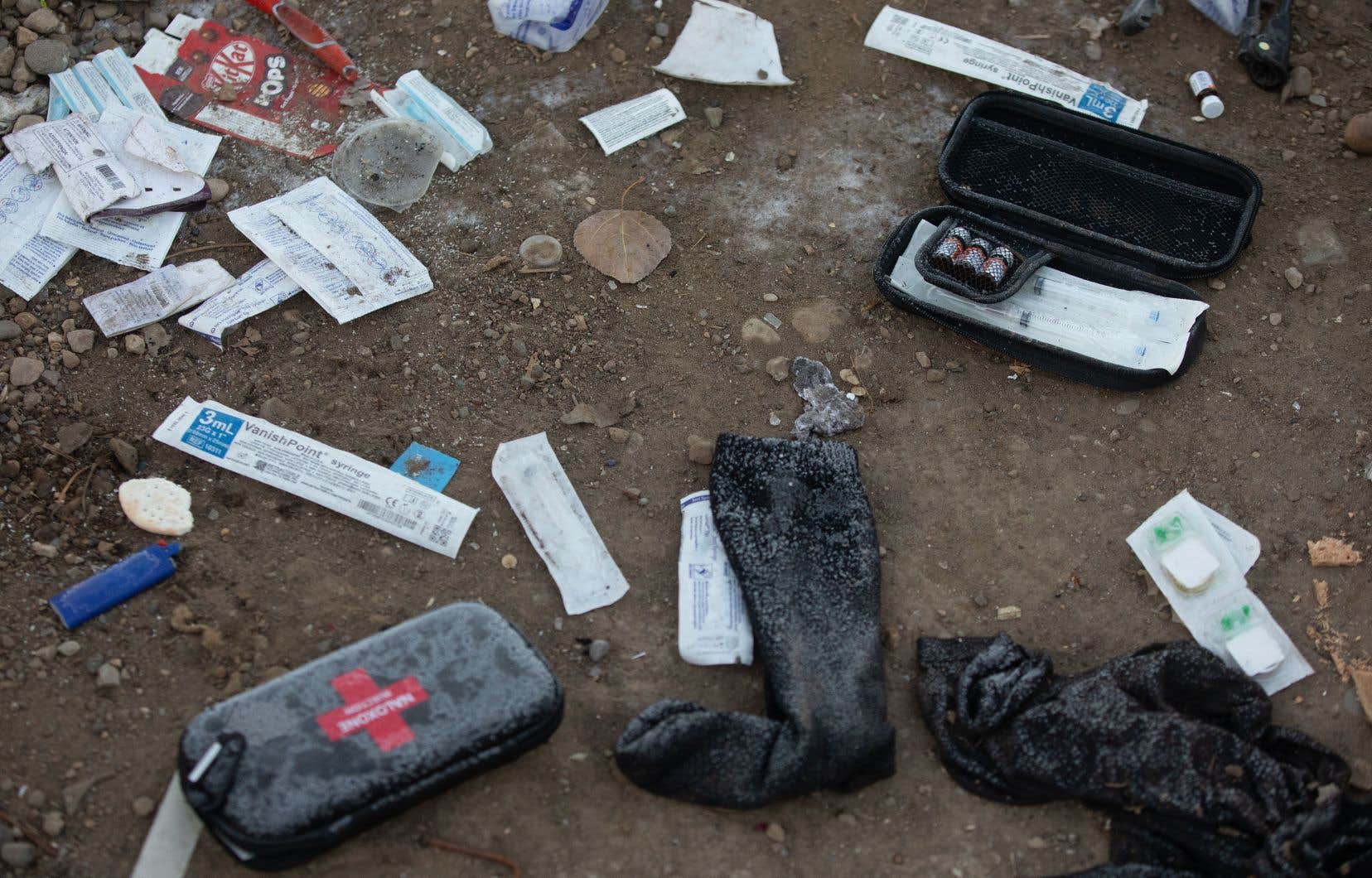Since the start of 2024, the Capitale-Nationale public health department estimates that the Quebec region has experienced 32 overdose deaths — more than double the 15 observed at the same time last year.
“These figures must be interpreted with caution, since they are reports,” warns D.D Anne-Frédérique Lambert-Slythe, a physician specializing in public health and preventive medicine at the CIUSSS de la Capitale-Nationale. It can take us up to 12 months to get confirmation from the coroner for overdose cases.
Even though the figure remains to be validated, it nevertheless reflects a reality already observable on the ground. The saturation of L’Interzone, the only supervised consumption centre in the capital, and the marked increase in demand for injection and inhalation equipment reflect a trend: drug addiction is gaining ground in Quebec City and its surrounding areas.
“There is definitely an increase in crack pipes and weed pipes. crystal meth which is detected,” continues the DD Lambert-Slythe: We see it: there are more people injecting, but there are also more people inhaling these substances. I would say it’s exponential, we’ve roughly doubled the amount we’re giving out in the last few years.”
In 2023, opioids caused 31% of the 32 fatal overdoses reported to the CIUSSS — 17 of which were still requiring coroner confirmation as of May 27. Cocaine was responsible for 18% of deaths, followed by amphetamines and methamphetamines, which were implicated in 12% of overdoses without follow-up.
The majority of deaths are men aged 35 to 55 who are suffering from drug overdoses, says Dr.D Lambert-Slythe.
“It’s worrying,” she adds. Faced with the increase in needs and the mutually reinforcing crises of homelessness, mental health and drug addiction, the CIUSSS de la Capitale-Nationale launched a discussion in the spring on ways to expand “the offer of overdose prevention and harm reduction services.”
Expansion of services envisaged
“Steps are underway to determine, with our partners, the best directions to improve supervised consumption services (SCS) for the Capitale-Nationale region,” writes Stéphanie Roy, assistant director of communications at the CIUSSS.
The file is “active and a priority” – even if the solutions envisaged remain to be determined and remain dependent on funding and the availability of human resources. “We are not currently able to specify the terms or timetable for extending services for our region,” concludes the CIUSSS de la Capitale-Nationale, “since preliminary work of reflection and consultation still remains to be finalized.”
The Quebec City Police Department (SPVQ) is also taking part in the discussions initiated by public health and specifies that a meeting is to take place in September. The picture of the solutions envisaged should become clearer at the end of the meeting. “It is during this meeting,” writes Sergeant Sandra Dion, “that there will be discussions concerning the recommendations between partners and collaborators.”
A supervised consumption center already saturated
Since spring 2021, Quebec has had a supervised consumption centre, L’Interzone, whose five cubicles are already struggling to meet demand. “The profile of users has broadened,” notes Amélie Bédard, spokesperson for the SABSA Solidarity Cooperative, which oversees the management of the centre. “In addition to our priority clientele aimed at reaffiliating the most vulnerable people upstream of the front line […] We now have people from immigrant backgrounds or asylum seekers, customers who were not represented during our first years in business.”
In June, Radio-Canada reported that L’Interzone had seen its traffic triple in a few years, going from 8,500 in March 2021 to more than 25,000 last year. “L’Interzone is no longer enough,” says the DD Anne-Frédérique Lambert-Slythe.
“The situation is changing rapidly, the needs are becoming more and more pressing and the substances being consumed are becoming more and more dangerous given their composition, toxicity and polyconsumption,” adds Amélie Bédard. Overdoses, a scourge that mainly affects downtown Quebec City, are also spreading to the Portneuf and Charlevoix regions where services for drug addicts remain more tenuous.
“These places are more decentralized, is it a unit [de consommation supervisée] mobile that it would take there? wonders the DD Lambert-Slythe. The model itself has not yet been determined and we are discussing with our partners which one is best suited to our regional reality, but also to the portrait of the substances consumed in our territory.
Overdoses kill more people than road accidents and homicides combined in the Quebec City region. Between 2021 and 2023, the latter killed a total of 35 people in the capital, according to data shared by the SPVQ. Meanwhile, overdoses claimed 97 consumers throughout the Capitale-Nationale region, according to data from the CIUSSS.
